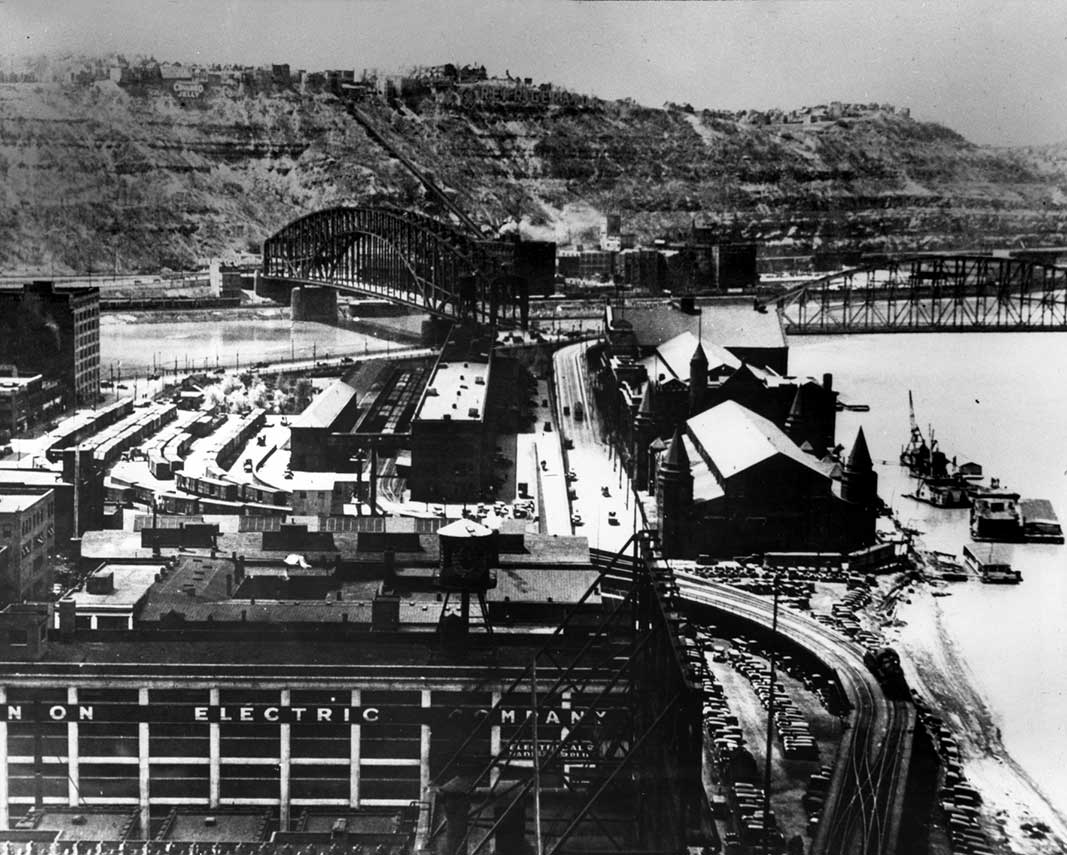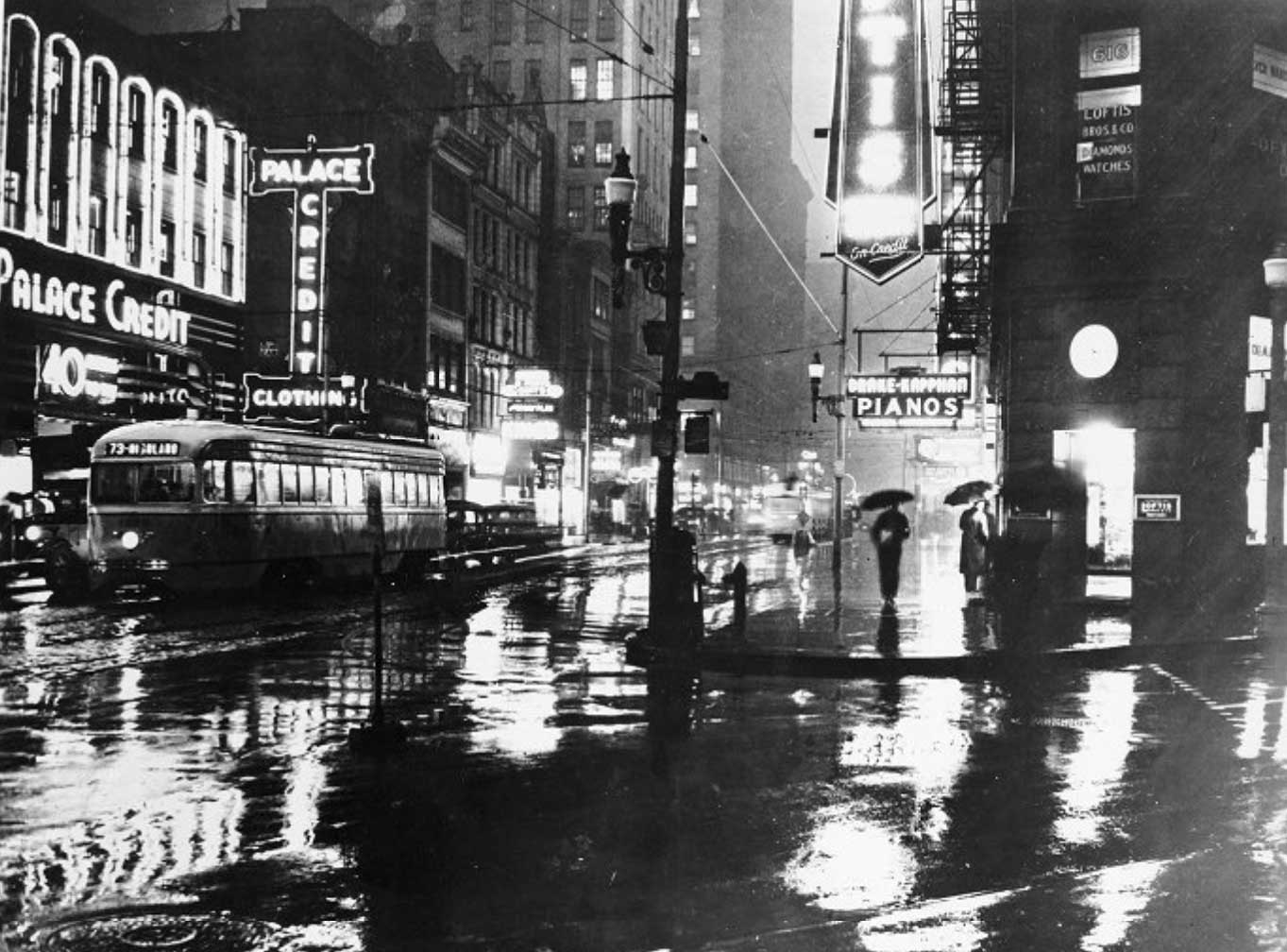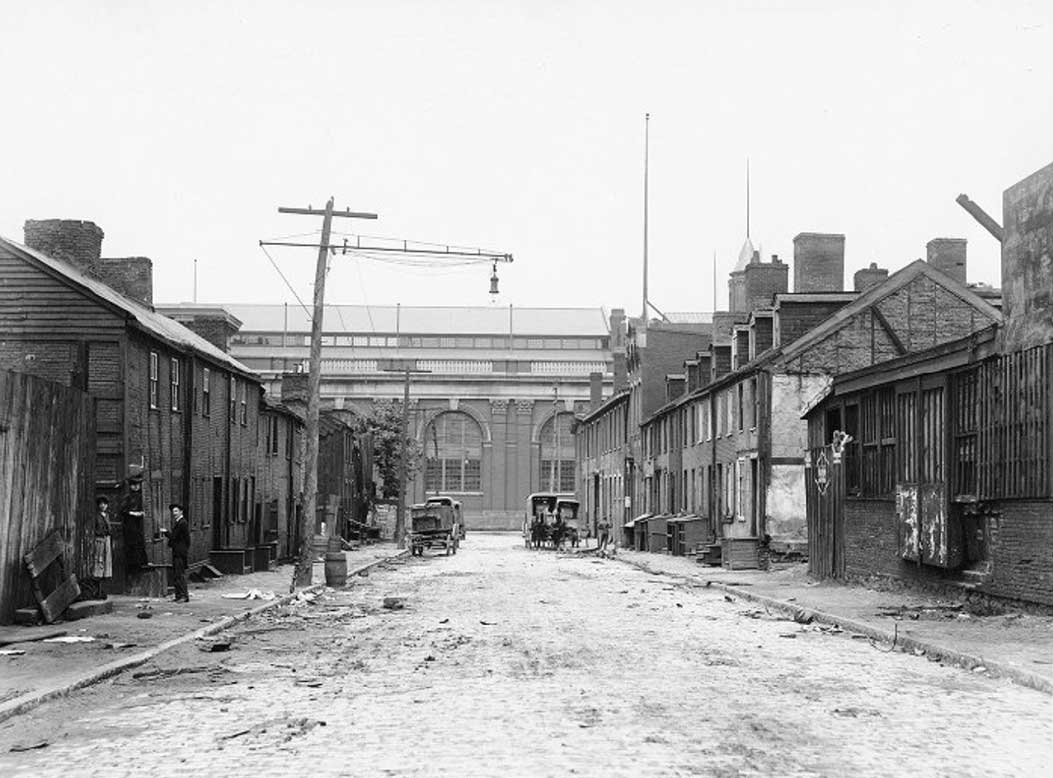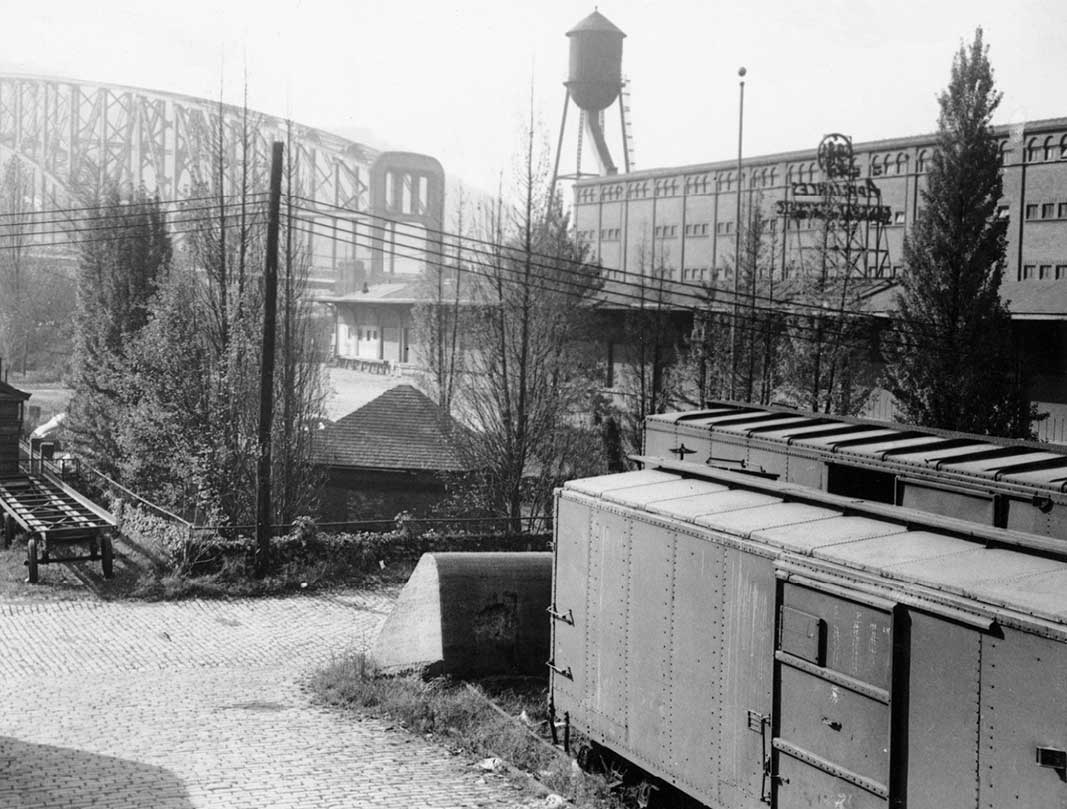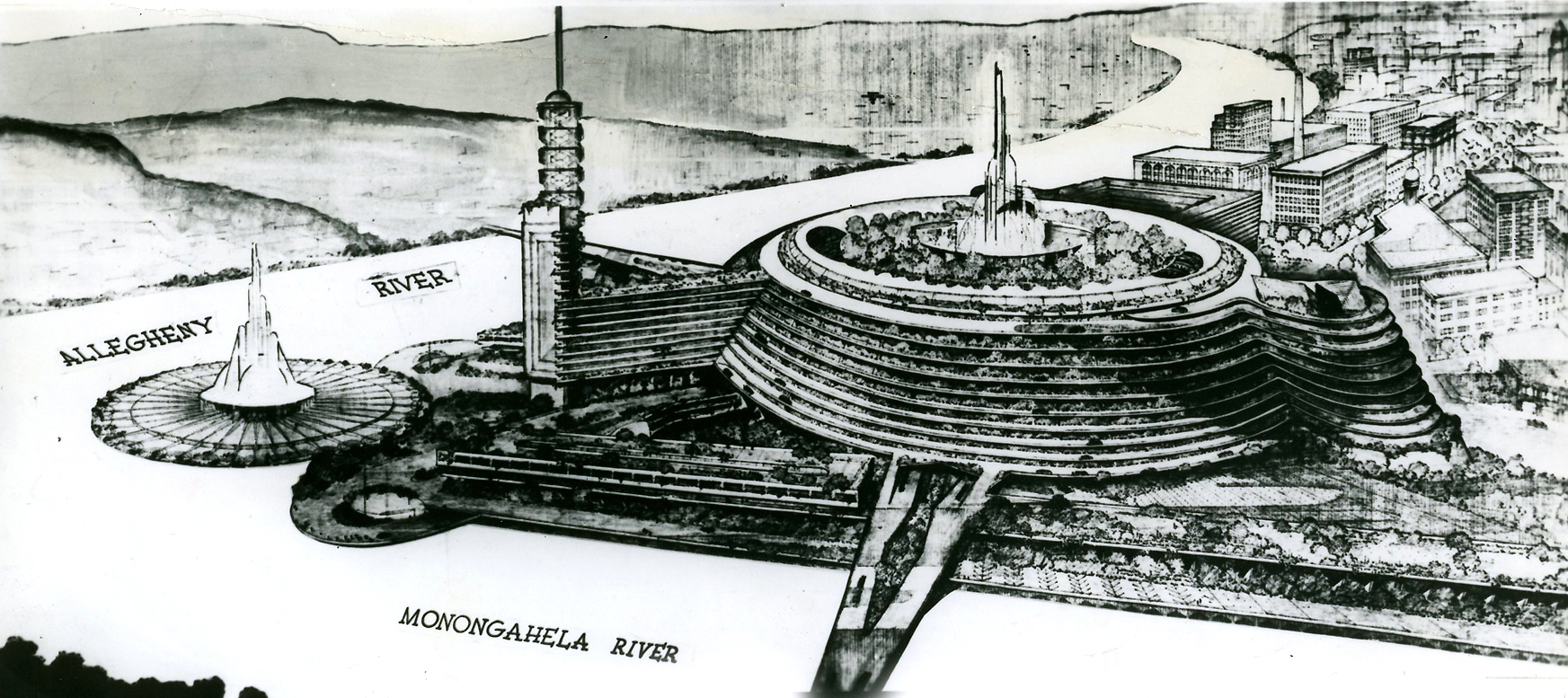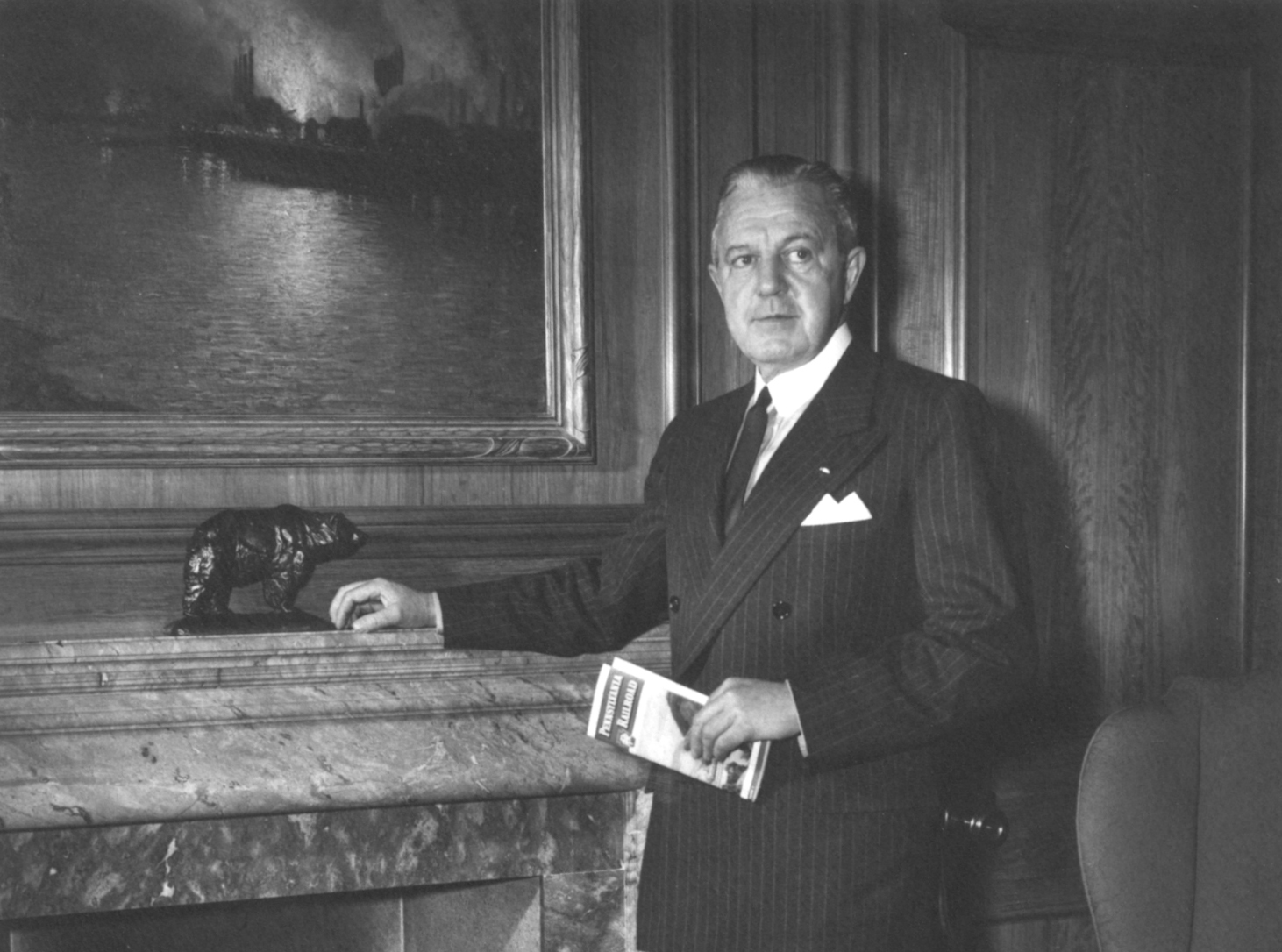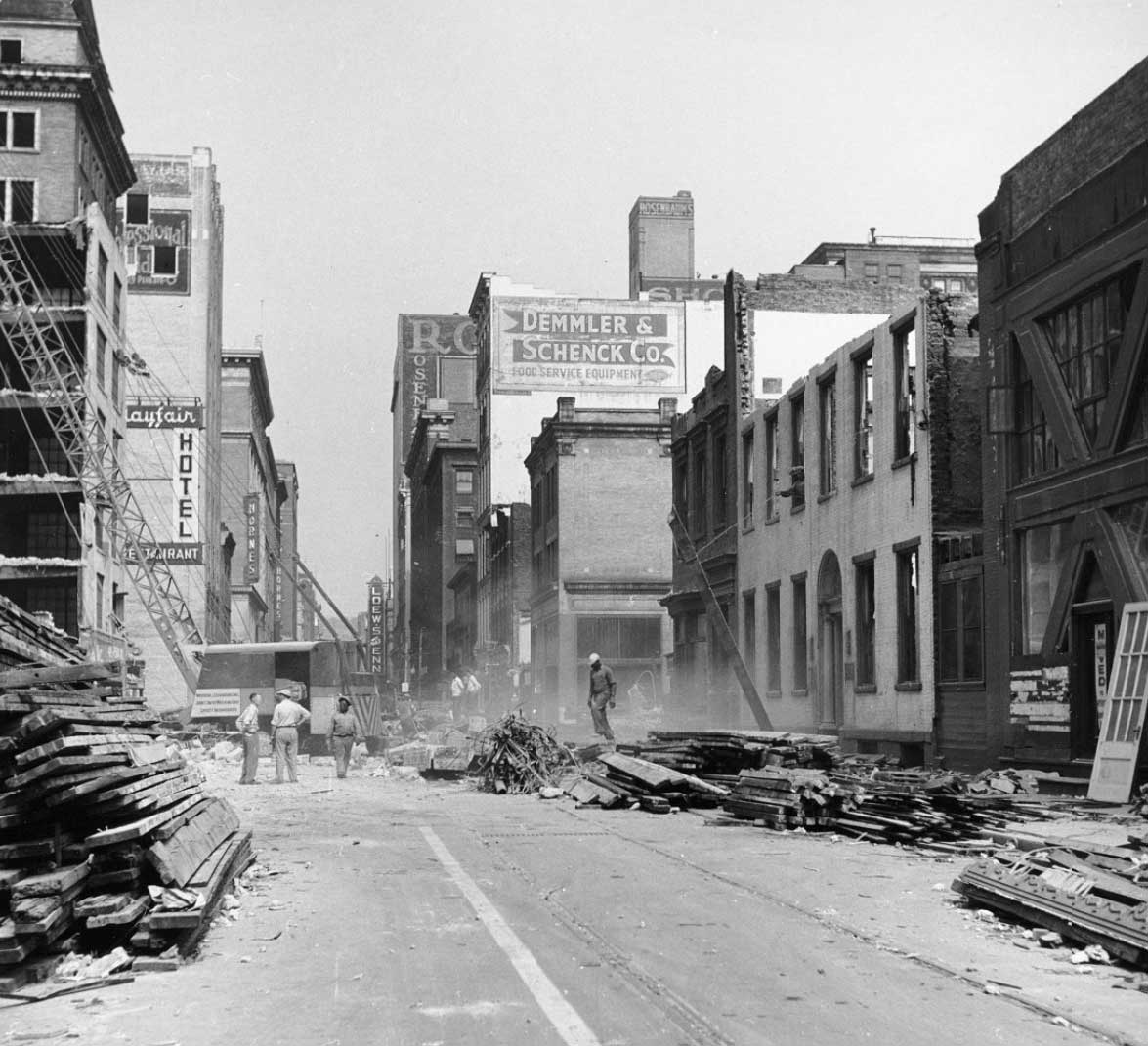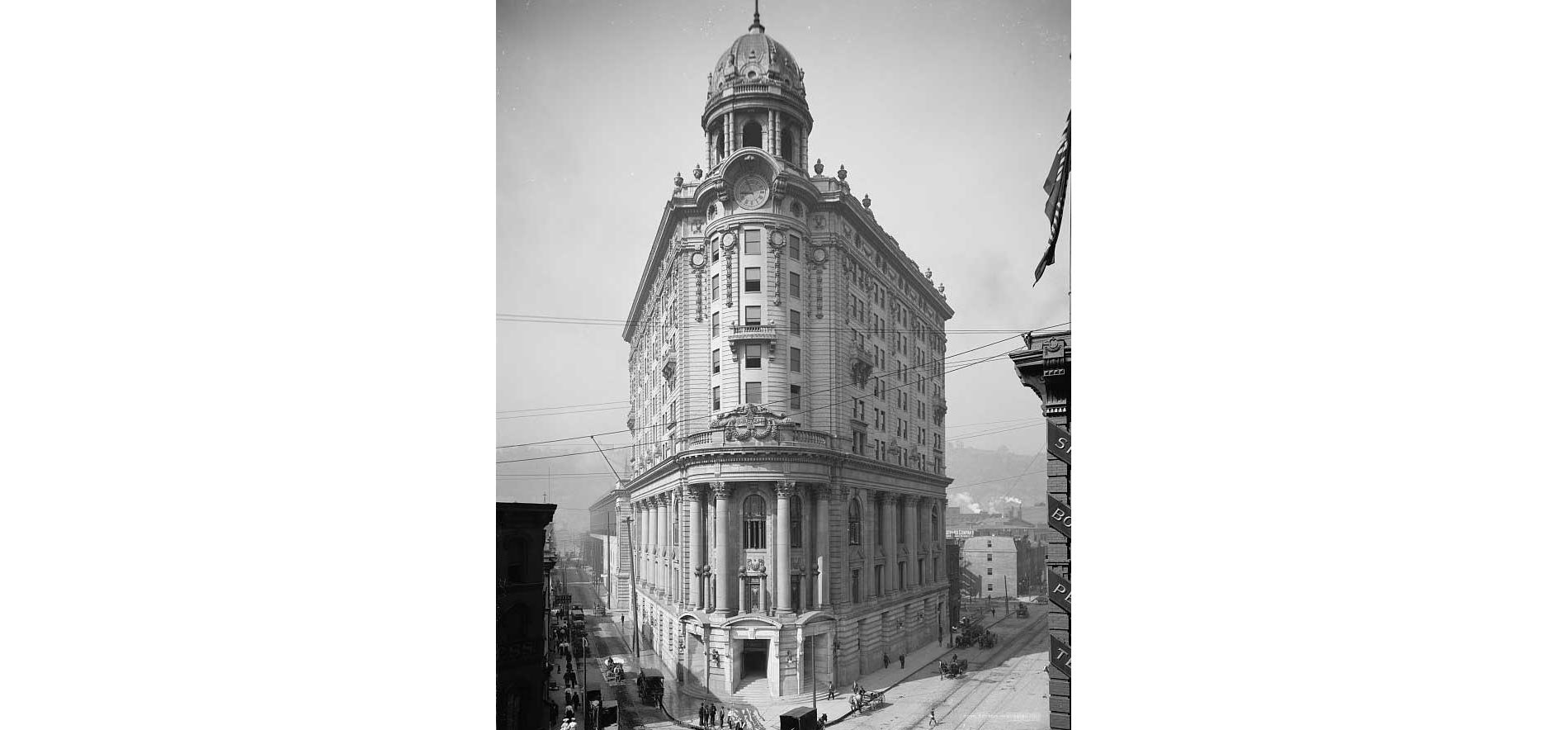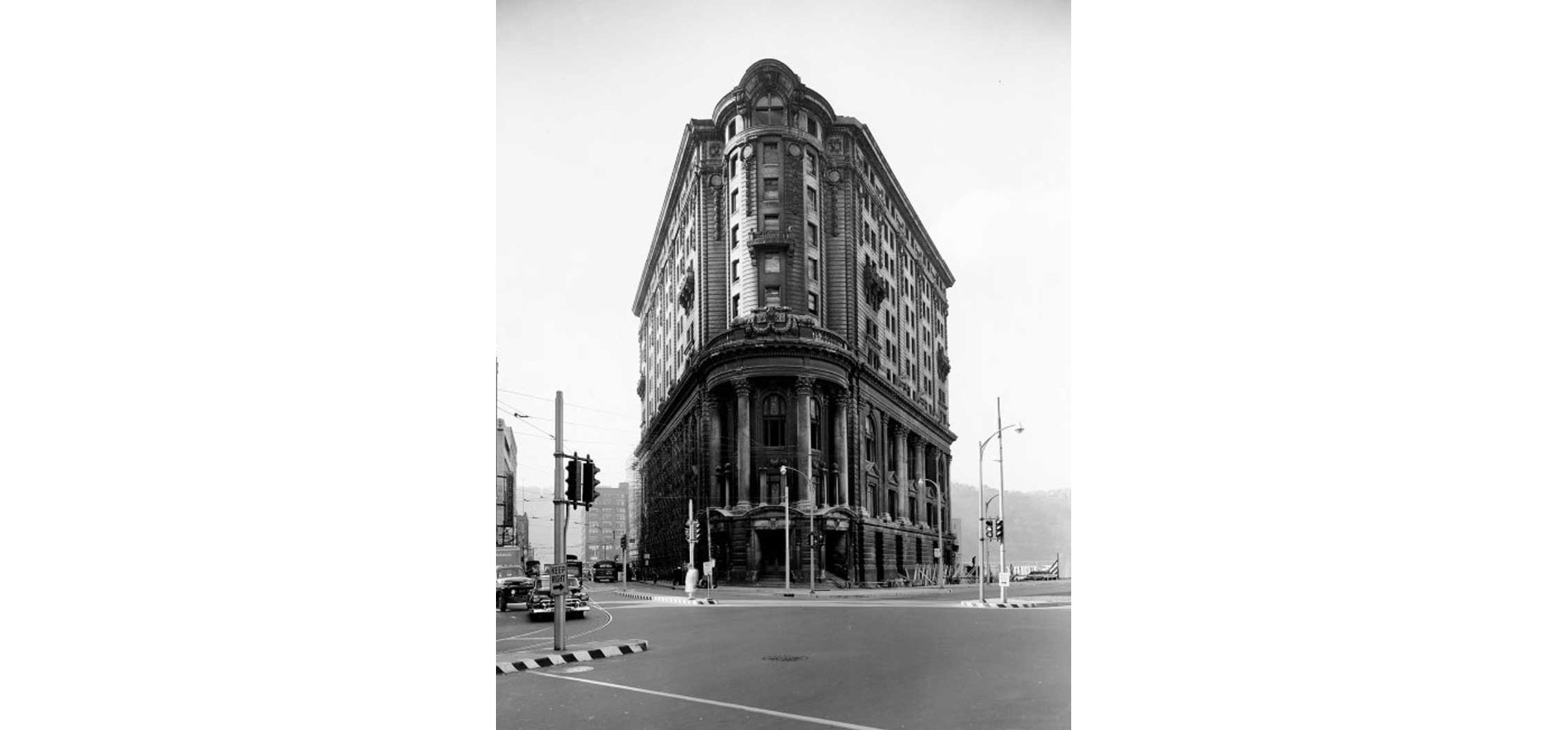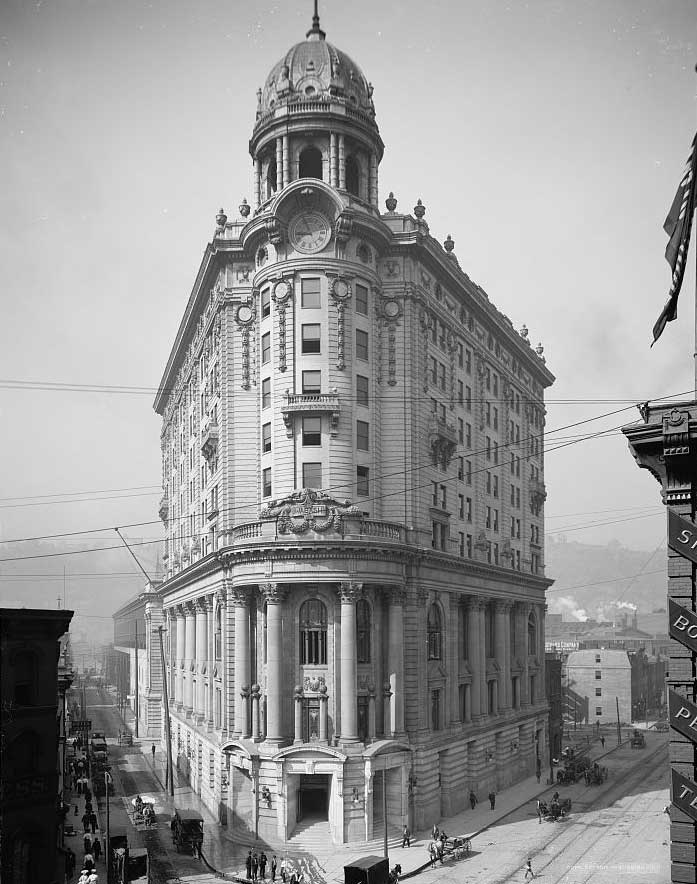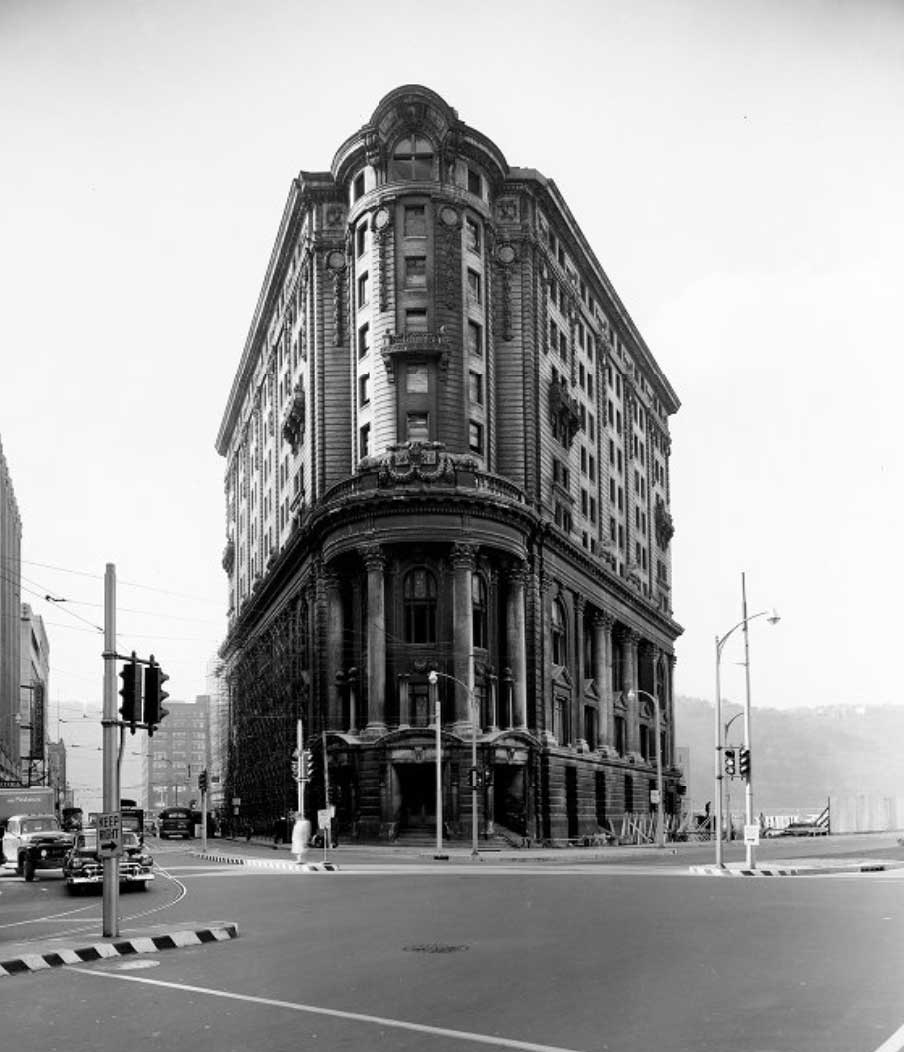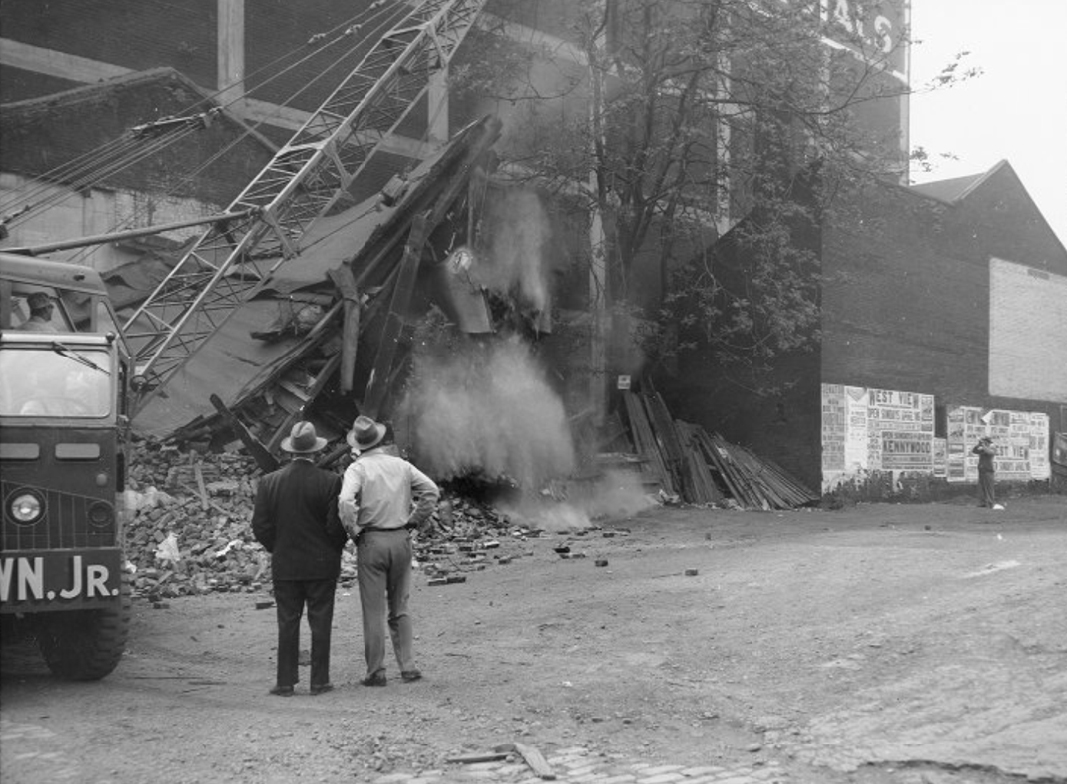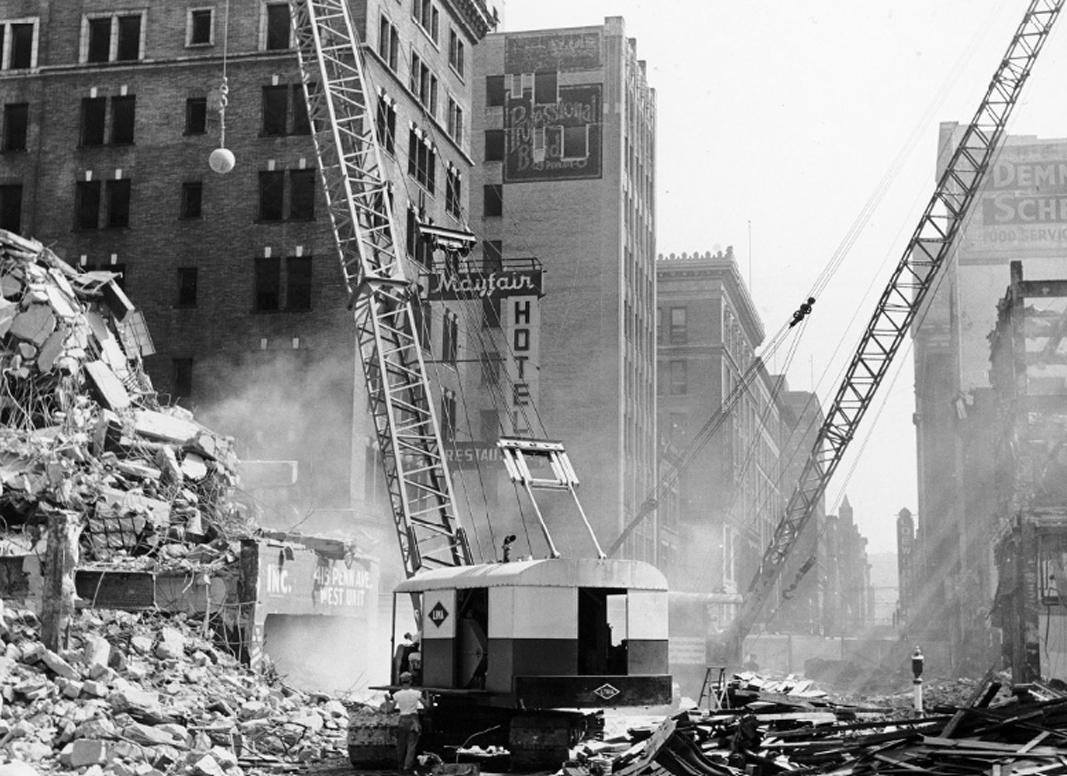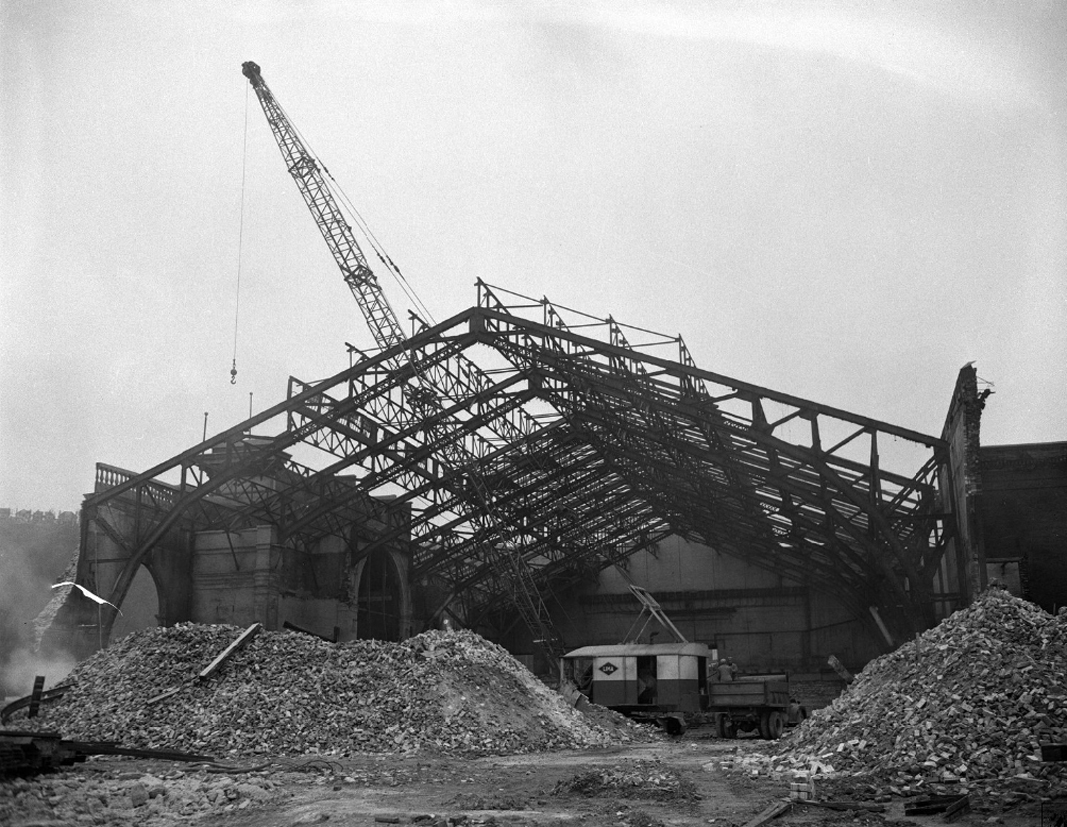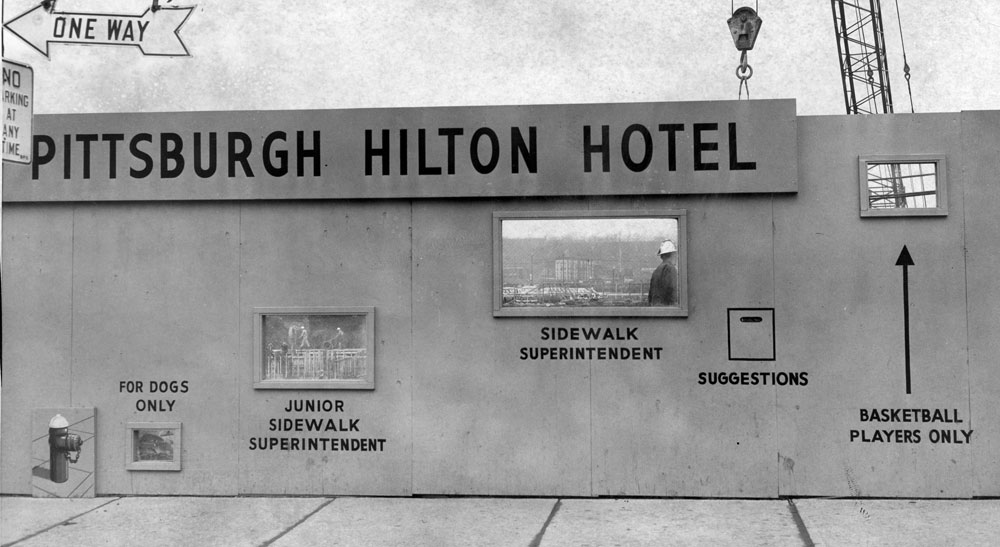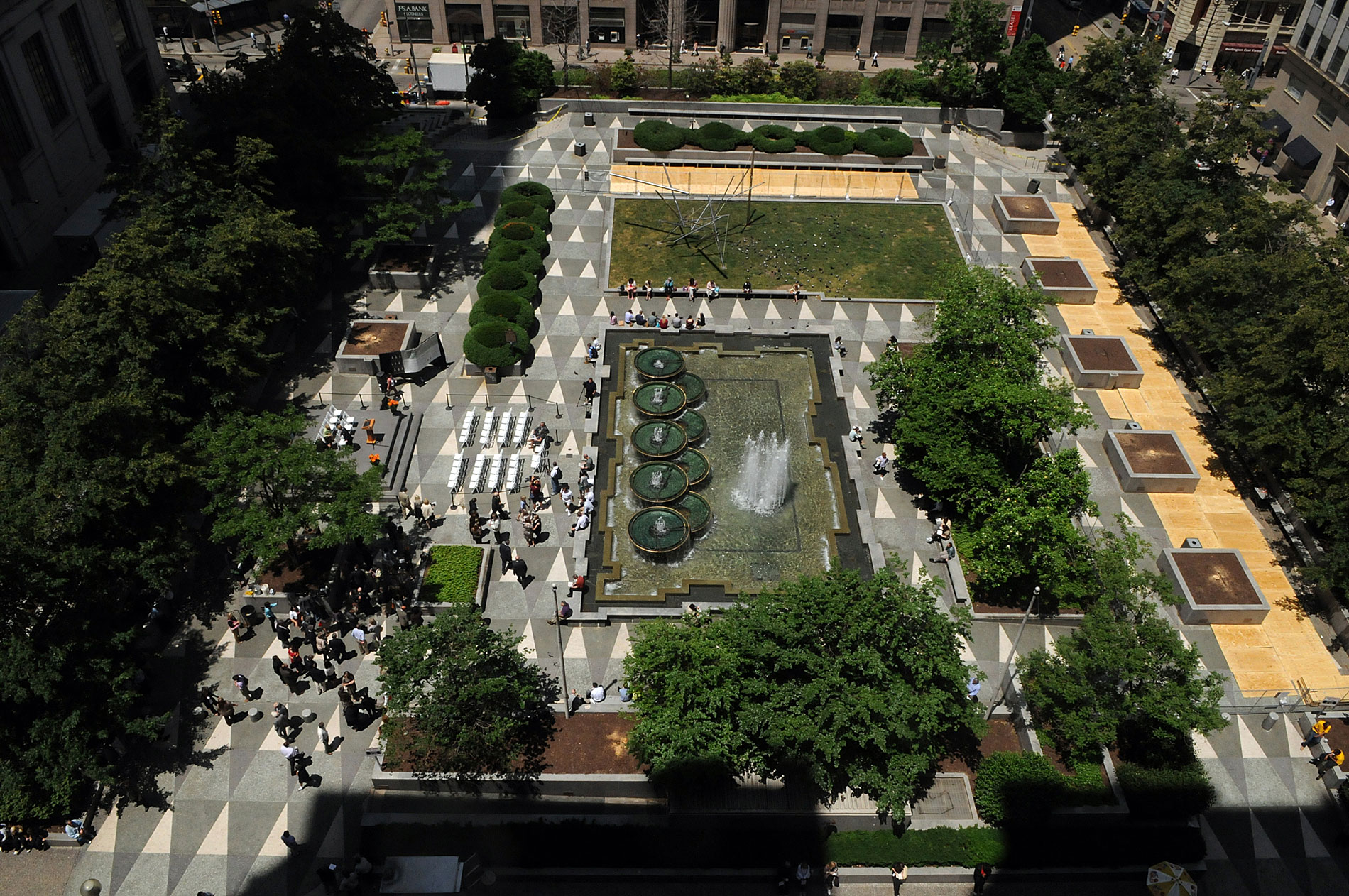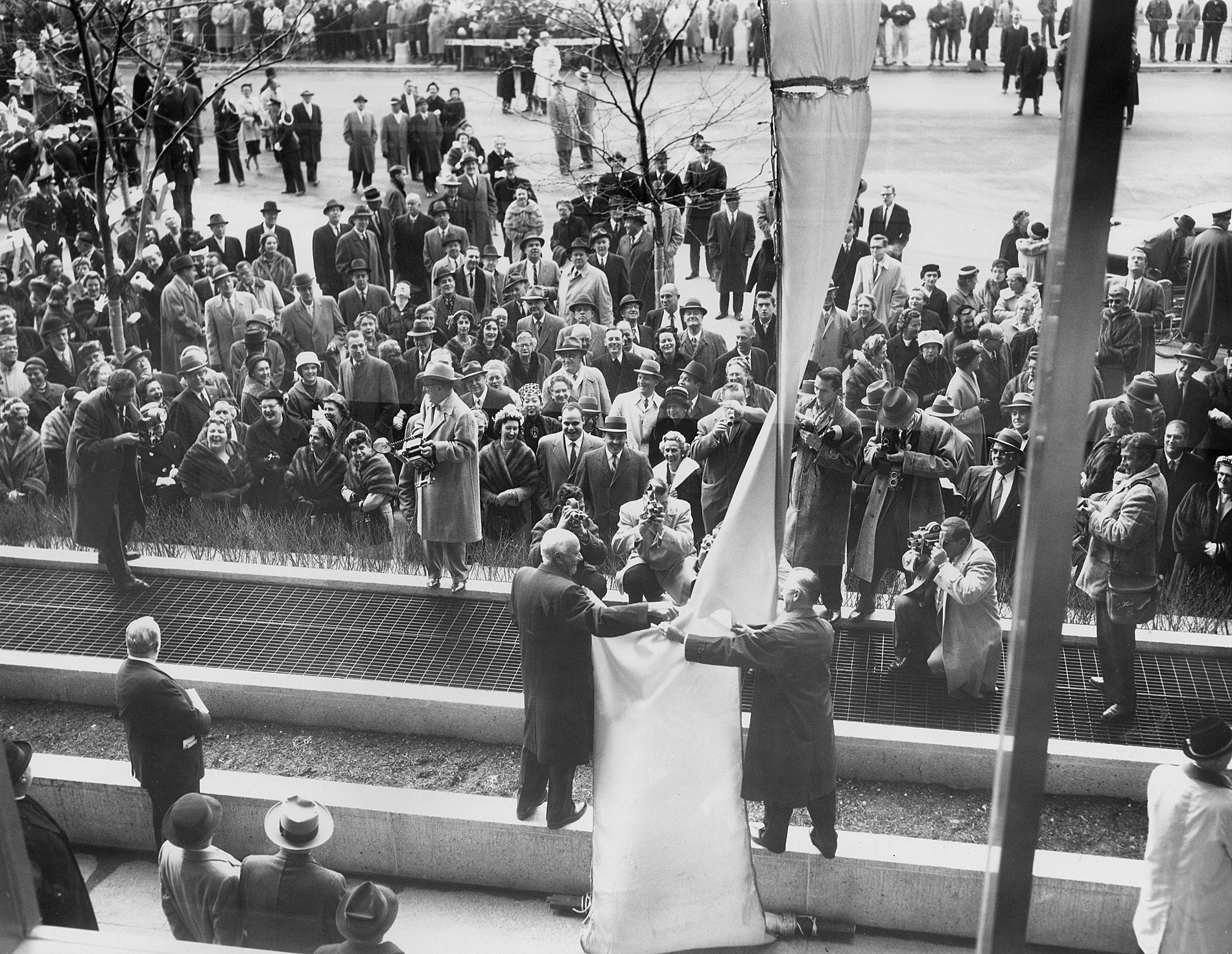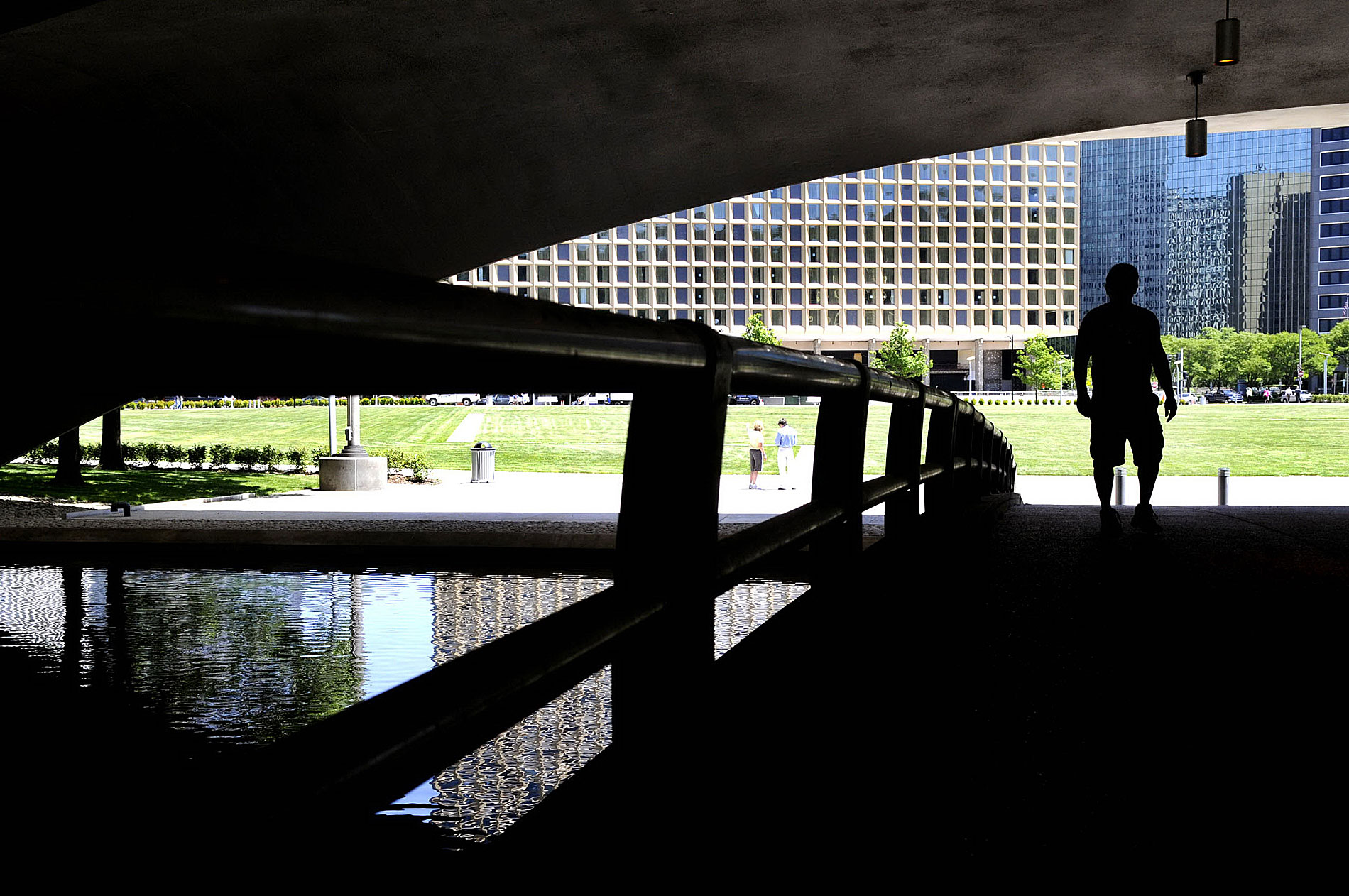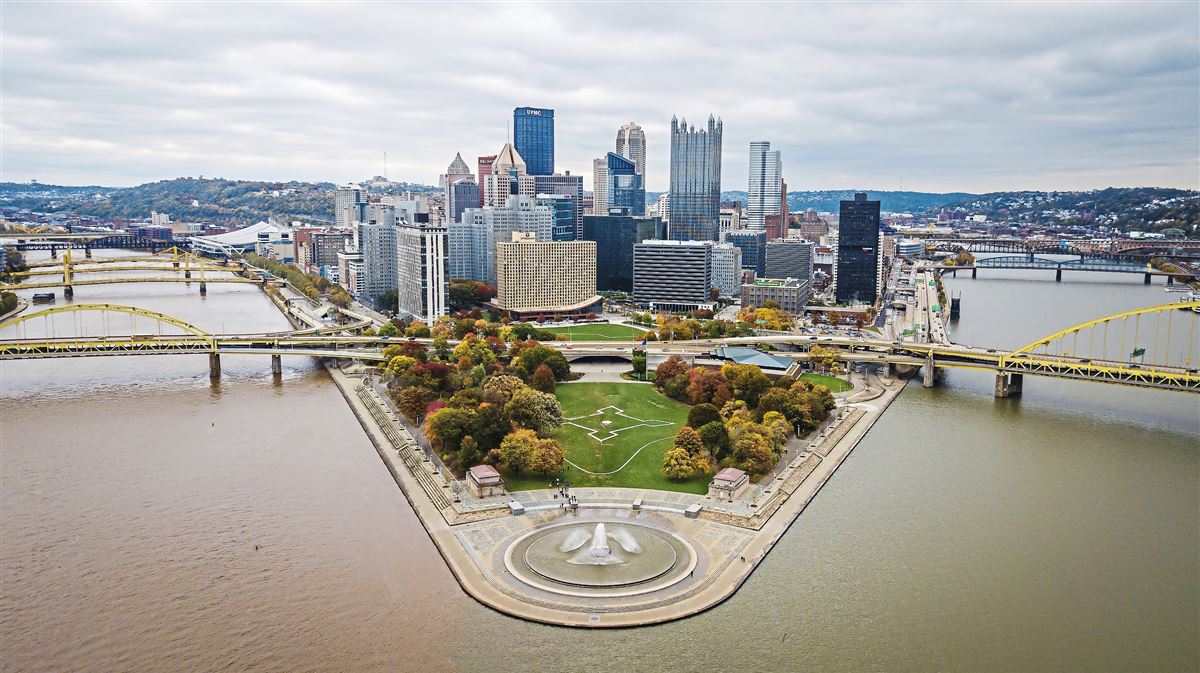Richard K. Mellon, an heir to the Mellon banking fortune and president and chair of Mellon Bank, played an outsized role in revitalizing the Point.
Inside the wood-paneled rooms of the Duquesne Club, Mellon gathered the city’s leaders to discuss cleaning up and reshaping the city. These meetings in 1943 organized the Allegheny Conference, comprising employers, philanthropists, cultural institutions and sources of wealth.
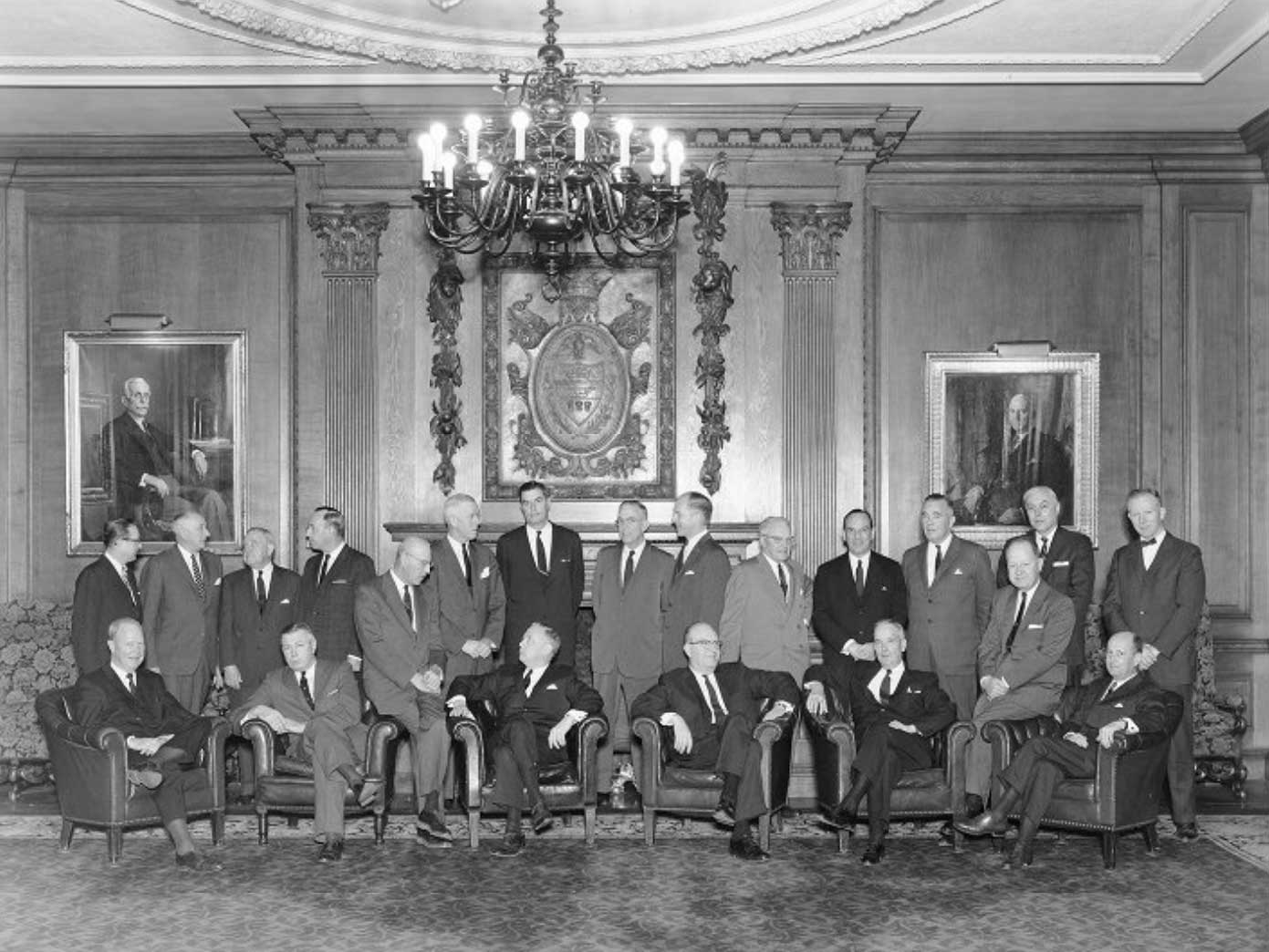
An undated photo of the Allegheny Conference on Community Development Executive Committee at Pittsburgh’s Duquesne Club: Seated, from left, Edward J. Hanley, vice president of the conference and president, Allegheny Ludlum Steel; Edward J. Magee, executive director; Leon Falk Jr., industrialist; John T. Ryan Jr., chairman of the conference and president, Mine Safety Appliances; Carl B. Jansen, president of the conference and chairman of board, Dravo; Gwilym A. Price, vice president of the conference and chairman of board, Westinghouse Electric; Leslie B. Worthington, president, U.S. Steel; John A. Mayer, vice president of the conference and president, Mellon National Bank and Trust. Standing, from left: John J. Grove, assistant director of the conference; Frank L. Magee, chairman, executive committee, Alcoa; Edward R. Weidlein, former chairman of the conference and retired president, Mellon Institute; George A. Shoemaker, president, Consolidation Coal; J. Stanley Purnell, assistant to the president, T. Mellon and Sons; William H. Rea, president, Oliver Tyrone Corp.; David G. Hill, president, Pittsburgh Plate Glass; Henry L. Hillman, president, Pittsburgh Coke and Chemical; Arthur B. Van Buskirk, former chairman of the conference and vice president and governor, T. Mellon and Sons; A.W. Schmidt, former chairman of the conference and president, A.W. Mellon Educational and Charitable Trust; James M. Bovard, secretary of the conference and president, Carnegie Institute; Theodore L. Hazlett Jr., solicitor; and Patrick J. Cusick Jr., assistant director of the conference. (Detre Library & Archives, Heinz History Center)
In 1945, plans to turn the Point from a slum into a showcase gathered steam as architect Charles Stotz and landscape architect Ralph E. Griswold began hashing out possible plans.
“We always came up against the fact that we had those two bridge ends looming 30 feet up in the air,” Griswold said. “There simply was no park area to design — only a tiny peak of land and waterfront beyond the bridges. How were people to get down to that? Who would want to and why?”

Mayor David L. Lawrence promotes the “Team-Up for Clean-Up” program in 1947. (Detre Library & Archives, Heinz History Center)
They got permission from Mellon to draw up two plans — one with the bridges moved and one without. In their plans finalized in October 1945, the architects made clear that anything other than moving the bridges would be a compromise and “will forever appear as such.”
They took the plans to Gov. Edward Martin, fearing he would reject them or favor less expensive options. Instead, the Republican governor said: “Which one is the better proposal? Which do you prefer?” When they answered, he laid aside the plan for leaving the bridges intact, saying, “I don’t want to see it.” Martin announced that his administration would finance the project.
David L. Lawrence, a Democrat, won the 1944 city mayoral race by just 12,790 votes. He could have taken a contrarian stance to Republican-backed plans for the Point. Instead, he embraced them, starting a long collaboration to transform Pittsburgh.
